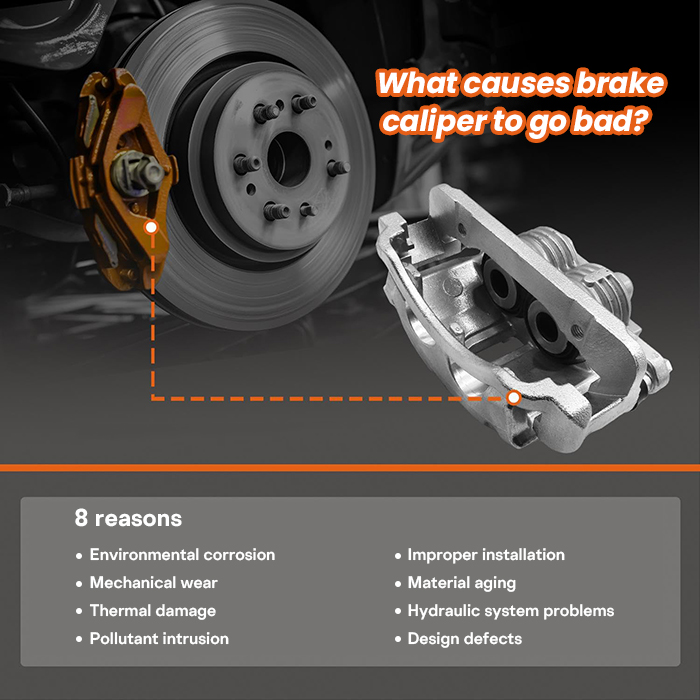What causes brake caliper to go bad?
Introduction to the working principle of calipers
Car calipers are the core components of disc brake caliper. They use hydraulic pressure to push the piston to squeeze the brake pads and generate braking force by friction with the brake disc. A healthy caliper should have good sealing, smooth piston movement, and stable structural strength.
Main causes and mechanisms of damage
-
Environmental corrosion
Salt spray erosion: Salt in the air in coastal areas accelerates metal oxidation
De-icing agent corrosion: Chemical corrosion caused by salting roads in winter
Typical case: The rust rate of vehicle calipers in northern regions is 40% higher than that in the south -
Mechanical wear
Wear of piston seal ring leads to hydraulic oil leakage
Abnormal wear caused by insufficient lubrication of guide pins
Direct friction of metal backing plate with caliper after excessive wear of brake pads -
Thermal damage
Continuous downhill braking produces high temperature above 300℃
Thermal deformation causes piston jamming
High temperature causes brake fluid to vaporize and form air blockage -
Pollutant intrusion
Sediment enters piston cavity and wears seals
Road antifreeze penetrates and corrodes metal
Water intrusion causes piston rust -
Improper installation
Guide pin torque does not meet the standard (standard value is usually 35–45 N·m)
Wrong use of piston return tool
Brake pads are not installed in place -
Material aging
Rubber seals age naturally in 5–7 years
Metal fatigue causes structural strength to decrease
Dust cover cracks and loses its protective function -
Hydraulic system problems
Brake fluid contamination accelerates rubber parts degradation
Hydraulic pipeline blockage leads to abnormal pressure
Master cylinder failure causes hydraulic shock -
Design defects
Irrational heat dissipation structure
Improper material selection
Inadequate dustproof design
Prevention and maintenance suggestions
Regular inspection
Check piston movement every 10,000 kilometers
Check whether the dust cover is damaged
Measure the remaining thickness of the brake pad
Proper maintenance
Replace brake fluid every 2 years
Use special grease to maintain guide pins
Avoid high-pressure water gun direct spraying calipers when washing the car
Driving habits
Avoid long-term continuous braking
Lightly press the brake after wading to remove water
Do not wash the car immediately after parking
Maintenance precautions
Use original disc brake calipers or high-quality aftermarket brake caliper
Strictly install according to torque requirements
Check the caliper status when replacing brake pads—this is often a good time to consider brake caliper replacement if significant wear or damage is detected.
Caliper damage is often the result of multiple factors. By understanding these reasons, car owners can take targeted preventive measures to extend the service life of the caliper and ensure driving safety. When the above warning signals appear, it is recommended to go to a professional maintenance point for inspection immediately.
